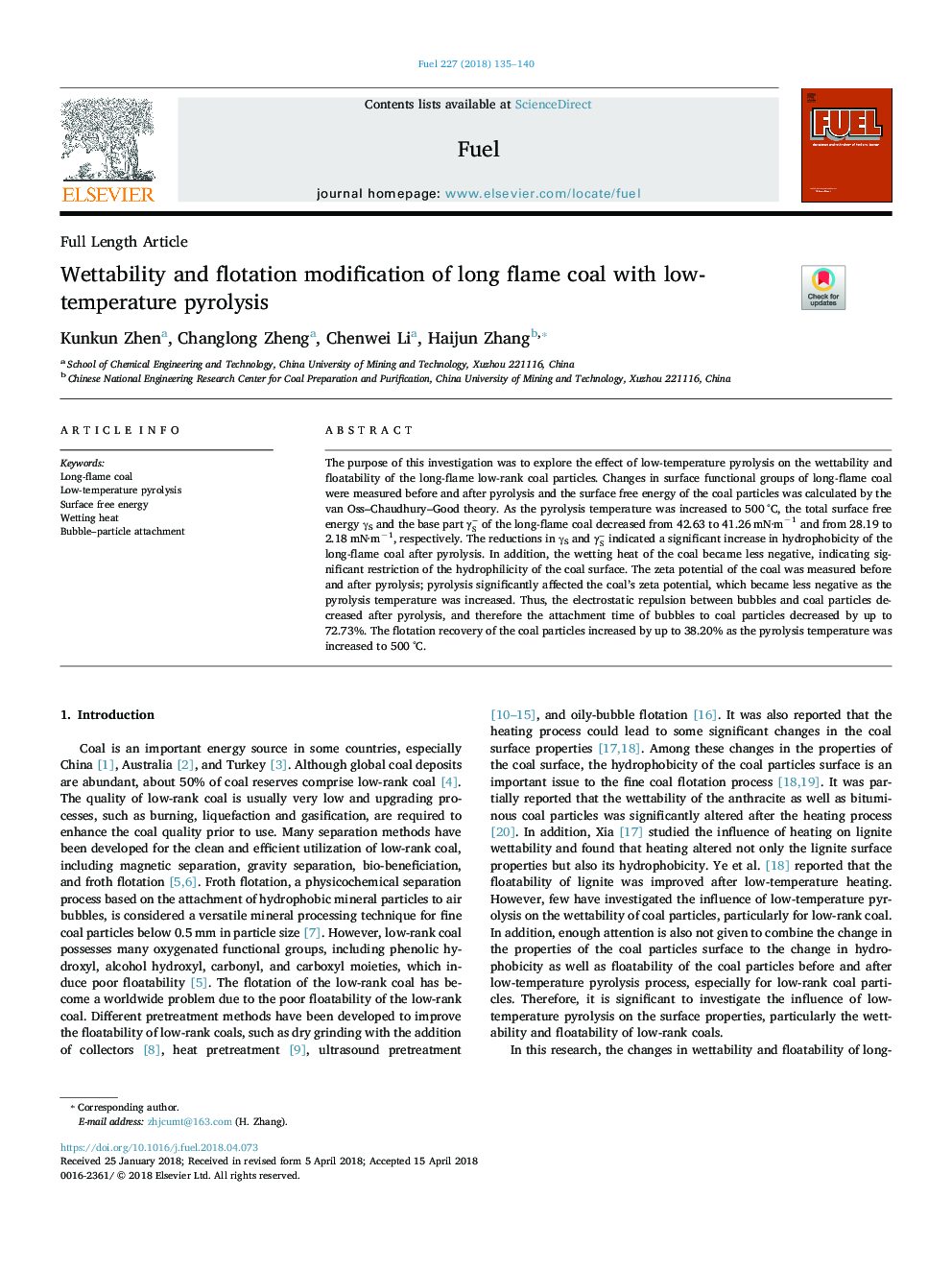| Article ID | Journal | Published Year | Pages | File Type |
|---|---|---|---|---|
| 6630796 | Fuel | 2018 | 6 Pages |
Abstract
The purpose of this investigation was to explore the effect of low-temperature pyrolysis on the wettability and floatability of the long-flame low-rank coal particles. Changes in surface functional groups of long-flame coal were measured before and after pyrolysis and the surface free energy of the coal particles was calculated by the van Oss-Chaudhury-Good theory. As the pyrolysis temperature was increased to 500â¯Â°C, the total surface free energy γS and the base part γS- of the long-flame coal decreased from 42.63 to 41.26â¯mN·mâ1 and from 28.19 to 2.18â¯mN·mâ1, respectively. The reductions in γS and γS- indicated a significant increase in hydrophobicity of the long-flame coal after pyrolysis. In addition, the wetting heat of the coal became less negative, indicating significant restriction of the hydrophilicity of the coal surface. The zeta potential of the coal was measured before and after pyrolysis; pyrolysis significantly affected the coal's zeta potential, which became less negative as the pyrolysis temperature was increased. Thus, the electrostatic repulsion between bubbles and coal particles decreased after pyrolysis, and therefore the attachment time of bubbles to coal particles decreased by up to 72.73%. The flotation recovery of the coal particles increased by up to 38.20% as the pyrolysis temperature was increased to 500â¯Â°C.
Related Topics
Physical Sciences and Engineering
Chemical Engineering
Chemical Engineering (General)
Authors
Kunkun Zhen, Changlong Zheng, Chenwei Li, Haijun Zhang,
